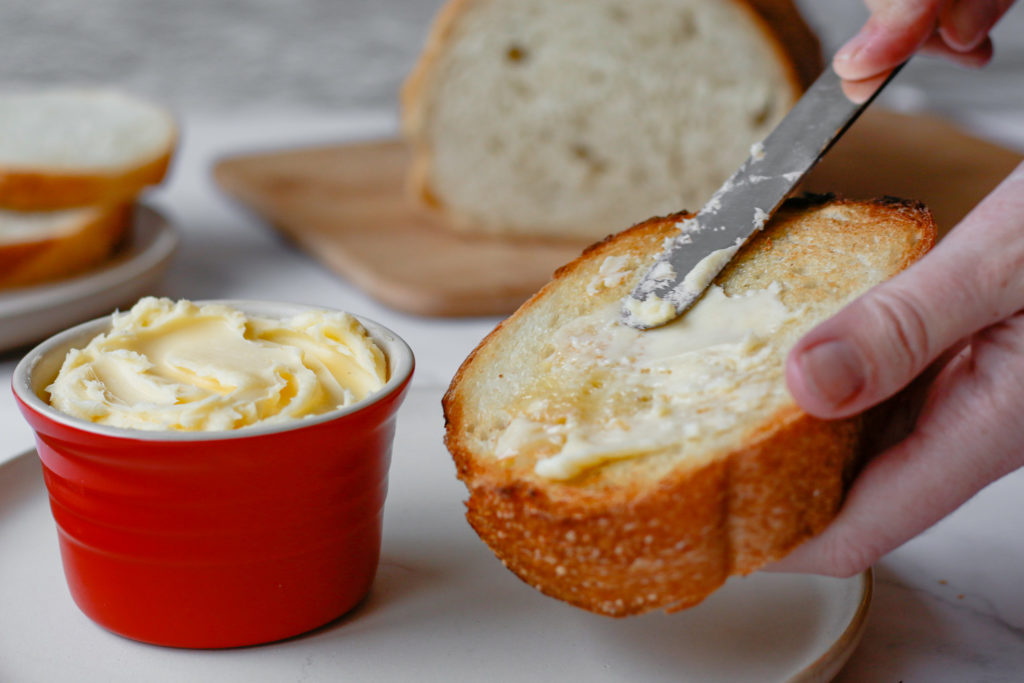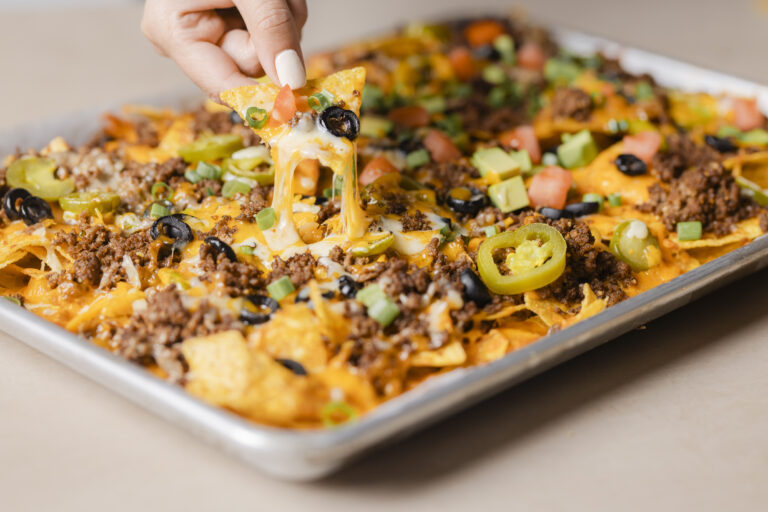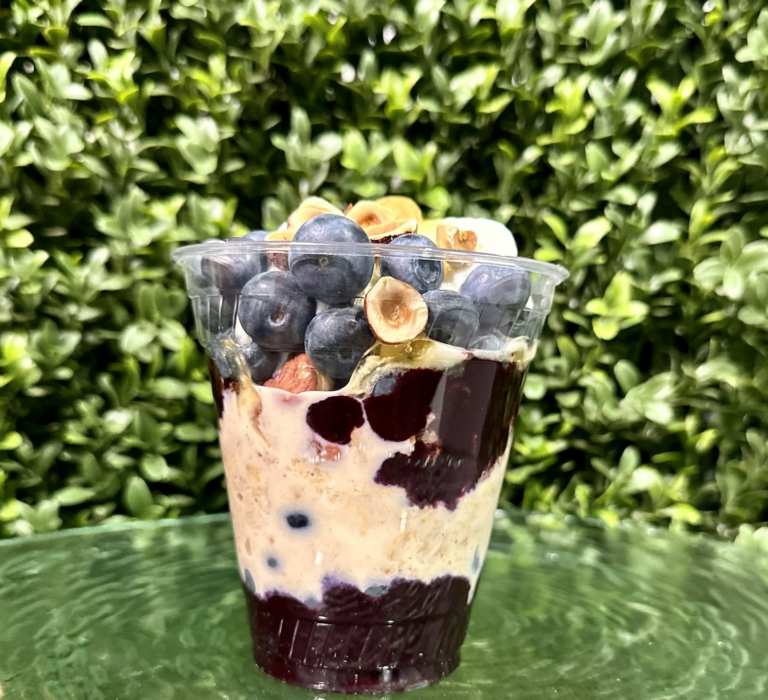There can be an awful lot of math involved in cooking and baking.
You might be following an online recipe using the Imperial measurement system, but have Canadian products labeled with the metric system. Or you might need to figure out how much of a solid product equals a liquid volume.
This is especially true when it comes to butter. It’s typically measured by volume in Canadian recipes, but if you’re following an American recipe it’s likely calling for sticks or pounds. And don’t get us started on the various cups and spoons!
Here’s our handy guide to converting butter measurements.
Metric to Imperial butter measurement conversions.
There are a lot of decimals in this list, but don’t worry! It’s usually okay to round up. That’s why it’s normal to see recipes use “250 mL or 1 cup”.
Grams in 1 cup: 226.8 g
Grams in 1 ounce: 28.35 g
Grams in 1 pound: 453.6 g
Grams in 1 teaspoon: 4.2 g
Grams in 1 tablespoon: 14.8 g
Grams in 1 stick: 113.4 g
Millilitres in 1 cup: 236.6 mL
Millilitres in 1 ounce: 29.6 mL
Millilitres in 1 pound: 473.2 mL
Millilitres in 1 teaspoon: 4.9 mL
Millilitres in 1 tablespoon: 14.8 mL
Millilitres in 1 stick: 125 mL
Popular Imperial butter conversions.
Although we’re glad to be on the metric system, we know you might need these conversions for butter in your favourite online recipes.
2 cups = 1 lb, 4 sticks, 16 oz
1 cup = ½ lb, 2 sticks, 8 oz
¼ cup = ¼ lb, 1 stick, 4 oz
How do I use all those numbers to quickly measure butter?
The good news is that regular butter is almost always sold in the same size portions in BC–and most brands have common measurements printed on one side of the label.
A block of butter in Canada is the equivalent of 2 cups, 500 mL, 454 g, 1 pound, or 4 sticks. (It’s also 30 tablespoons or 96 teaspoons, but let’s hope you don’t have to figure out a single teaspoon from a whole block!)
If your recipe calls for 1 cup, 250 mL, 250 g, half a pound, or 2 sticks, you can simply cut a new block of butter in half.
If it calls for ½ cup, 125 mL, 125 g, a quarter pound, or 1 stick, cut your butter in half and then half again.
If you need an amount of butter that’s not so easy to cut from the block, let the butter soften slightly. Then you can use a spatula to push the butter down into a measuring cup or spoon, and level it off at the correct amount.
And here’s another sneaky tip: if your recipe calls for, say, 125 mL of butter, you can fill a measuring cup with 125 mL of water and add butter until it reaches the 250 mL mark. Then discard the water.
Don’t forget that there are different butter types to consider when you’re cooking or baking, and grab our tips on keeping butter fresh.



